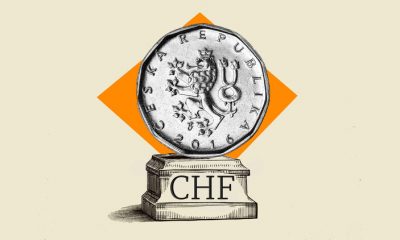

others
US Dollar flat after a rather dull PCE reading ahead of Zelensky visiting the White House – Crypto News
- The US Dollar holds steady on Friday after the US PCE reading for January.
- No surprises in the PCE numbers which all were in line of expectations.
- The US Dollar Index (DXY) tries to consolidate gains above 107.00.
The US Dollar Index (DXY), which tracks the performance of the US Dollar (USD) against six major currencies, is flat and orbits around 107.30 at the time of writing on Friday and tries to keep a hold on that level. Markets got shaken up again overnight as United States (US) President Donald Trump confirmed that tariffs for Canada and Mexico are going into effect on March 4. Meanwhile, China will face an additional 10% levy on the same day.
On the economic data front, all eyes on Friday were on the Personal Consumption Expenditures (PCE) data for January. In the second reading of the US Gross Domestic Product (GBP) for the fourth quarter of 2024 on Thursday, the PCE components for both the headline and the core reading were revised up. Though the January numbers were in line of expectations and did not trigger or see any outside moves.
Daily digest market movers: Dull data
- Ukraine President Volodymyr Zelenskyy is heading to Washington D.C. to sign a rare-earth deal with US President Donald Trump this Friday.
- The Personal Consumption Expenditures Price Index for January was nearly fully in line of expectations:
- The monthly headline PCE came in at 0.3%, unchanged from the previous reading.
- The monthly core PCE ticked up to 0.3% from 0.2% in December.
- The headline PCE rose to 2.6%, beating the 2.5% year-over-year compared to 2.6% in December, while the core PCE is expected rose to 2.6% in January compared to 2.8% in the previous month.
- At 14:45 GMT, the Chicago Purchase Managers Index for February is due. The expectation is still for a contraction at 40.6, coming from 39.5 in January.
- Equities are seeing US equities starting to tick higher just ahead of the US opening bell.
- The CME Fedwatch Tool projects a 29.7% chance that interest rates will remain at the current range of 4.25%-4.50% in June, with the rest showing a possible rate cut.
- The US 10-year yield trades around 4.25%, further down from last week’s high at 4.574%.
US Dollar Index Technical Analysis: Flat into the weekend
Finally, the US Dollar Index (DXY) might have had a nice uptick. Holding current ground will be key, with the biggest challenge coming from US yields still trending lower, narrowing the rate differential between the US and other countries. Another leg lower is possible should inflation concerns swirl back and push US yields higher again, supporting a stronger US Dollar.
On the upside, the 55-day Simple Moving Average (SMA) is the first resistance to watch for any rejections, currently at 107.97. In case the DXY can break above the 108.00 round level, 108.50 is coming back in scope.
On the downside, as already mentioned, 107.00 needs to hold as support. Nearby, 106.80 (100-day SMA) and 106.52, as a pivotal level, should act as support and avoid any returns to the lower 106-region.
US Dollar Index: Daily Chart
Inflation FAQs
Inflation measures the rise in the price of a representative basket of goods and services. Headline inflation is usually expressed as a percentage change on a month-on-month (MoM) and year-on-year (YoY) basis. Core inflation excludes more volatile elements such as food and fuel which can fluctuate because of geopolitical and seasonal factors. Core inflation is the figure economists focus on and is the level targeted by central banks, which are mandated to keep inflation at a manageable level, usually around 2%.
The Consumer Price Index (CPI) measures the change in prices of a basket of goods and services over a period of time. It is usually expressed as a percentage change on a month-on-month (MoM) and year-on-year (YoY) basis. Core CPI is the figure targeted by central banks as it excludes volatile food and fuel inputs. When Core CPI rises above 2% it usually results in higher interest rates and vice versa when it falls below 2%. Since higher interest rates are positive for a currency, higher inflation usually results in a stronger currency. The opposite is true when inflation falls.
Although it may seem counter-intuitive, high inflation in a country pushes up the value of its currency and vice versa for lower inflation. This is because the central bank will normally raise interest rates to combat the higher inflation, which attract more global capital inflows from investors looking for a lucrative place to park their money.
Formerly, Gold was the asset investors turned to in times of high inflation because it preserved its value, and whilst investors will often still buy Gold for its safe-haven properties in times of extreme market turmoil, this is not the case most of the time. This is because when inflation is high, central banks will put up interest rates to combat it. Higher interest rates are negative for Gold because they increase the opportunity-cost of holding Gold vis-a-vis an interest-bearing asset or placing the money in a cash deposit account. On the flipside, lower inflation tends to be positive for Gold as it brings interest rates down, making the bright metal a more viable investment alternative.
-

 Cryptocurrency1 week ago
Cryptocurrency1 week agoWhale Sells $407K TRUMP, Loses $1.37M in Exit – Crypto News
-
Business1 week ago
PENGU Rallies Over 20% Amid Coinbase’s Pudgy Penguins PFP Frenzy – Crypto News
-

 Blockchain1 week ago
Blockchain1 week agoBitcoin Hits All-Time High as Crypto Legislation Votes Near – Crypto News
-

 Blockchain1 week ago
Blockchain1 week agoRobinhood Dealing With Fallout of Tokenized Equities Offering – Crypto News
-

 Cryptocurrency1 week ago
Cryptocurrency1 week agoSatoshi-Era Bitcoin Whale Moves Another $2.42 Billion, What’s Happening? – Crypto News
-

 Technology1 week ago
Technology1 week agoGoogle DeepMind hires Windsurf CEO as OpenAI’s $3 billion acquisition collapses – Crypto News
-
Business1 week ago
XRP Set for Big Week as ProShares ETF Launches July 18 – Crypto News
-

 Cryptocurrency1 week ago
Cryptocurrency1 week agoBitcoin Breaches $120K, Institutional FOMO Takes and House Debate Propel Gains – Crypto News
-
Technology5 days ago
Fed Rate Cut Odds Surge As Powell’s Future Hangs In The Balance – Crypto News
-
Business5 days ago
XRP Lawsuit Update: Ripple Paid $125M in Cash, Settlement Hinges on Appeal – Crypto News
-
Business4 days ago
XLM Is More Bullish Than ETH, SOL, And XRP, Peter Brandt Declares – Crypto News
-
Technology1 week ago
Hyperliquid Hits Record $10.6B OI As HYPE Price Records New ATH – Crypto News
-

 Blockchain1 week ago
Blockchain1 week agoZiglu Faces $2.7M Shortfall as Crypto Fintech Enters Special Administration – Crypto News
-

 Cryptocurrency1 week ago
Cryptocurrency1 week agoCardano’s $1.22 target: Why traders should be aware of THIS ADA setup – Crypto News
-
Cryptocurrency1 week ago
Why Is Bitcoin Up Today? – Crypto News
-

 Metaverse6 days ago
Metaverse6 days agoWhy voice is emerging as India’s next frontier for AI interaction – Crypto News
-

 Metaverse6 days ago
Metaverse6 days agoNvidia’s Jensen Huang says AI ‘fundamental like electricity’, praises Chinese models as ‘catalyst for global progress’ – Crypto News
-

 Blockchain5 days ago
Blockchain5 days agoRipple and Ctrl Alt Team to Support Real Estate Tokenization – Crypto News
-
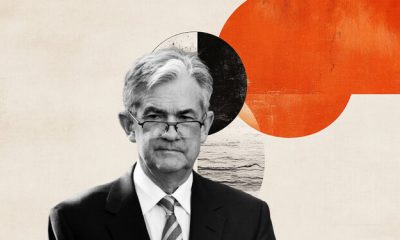
 others5 days ago
others5 days agoEUR/USD recovers with trade talks and Fed independence in focus – Crypto News
-
Technology5 days ago
Fed Rate Cut Odds Surge As Powell’s Future Hangs In The Balance – Crypto News
-

 Cryptocurrency4 days ago
Cryptocurrency4 days agoBitcoin trades near $119K after new all-time high; Coinbase rebrands wallet to ‘Base App’ – Crypto News
-

 Blockchain1 week ago
Blockchain1 week agoXRP Whales Surge To New Highs As Price Jumps 10% – Crypto News
-

 Cryptocurrency1 week ago
Cryptocurrency1 week agoStrategy Resumes Bitcoin Buys, Boosting Holdings to Over $72 Billion in BTC – Crypto News
-
Business7 days ago
Pepe Coin Rich List June 2025: Who’s Holding Highest PEPE as it Nears Half a Million Holders? – Crypto News
-

 Cryptocurrency6 days ago
Cryptocurrency6 days agoIt’s a Statement, Says Bitfinex Alpha – Crypto News
-

 Cryptocurrency5 days ago
Cryptocurrency5 days ago1inch price forecast: 1INCH hits 7-month high after double digit gains – Crypto News
-

 Cryptocurrency5 days ago
Cryptocurrency5 days ago1inch price forecast: 1INCH hits 7-month high after double digit gains – Crypto News
-

 others5 days ago
others5 days agoTop Crypto Exchange by Trading Volume Binance Announces Airdrop for New Ethereum (ETH) Ecosystem Altcoin – Crypto News
-
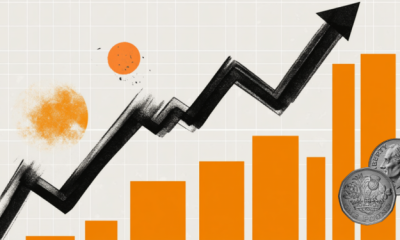
 others4 days ago
others4 days agoGBP/USD rallies on US PPI dip and Trump’s potential Powell removal – Crypto News
-

 others4 days ago
others4 days agoGBP/USD rallies on US PPI dip and Trump’s potential Powell removal – Crypto News
-
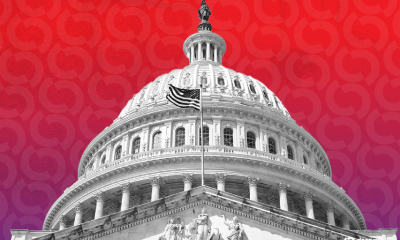
 Cryptocurrency1 week ago
Cryptocurrency1 week agoHouse Democrats Struggle to Approach ‘Crypto Week’ With Unified Front – Crypto News
-

 Metaverse1 week ago
Metaverse1 week agoGoogle’s Veo 3 brings the era of video on command – Crypto News
-

 Cryptocurrency1 week ago
Cryptocurrency1 week agoNear-Term Resistance at $170 But Bullishness Stays – Crypto News
-

 others1 week ago
others1 week agoGold rises as USD aversion and tariff tensions boost safe-haven demand – Crypto News
-
Cryptocurrency1 week ago
XRP, Solana and ADA Rally, Is Altcoin Season Back This July 2025? – Crypto News
-

 Cryptocurrency1 week ago
Cryptocurrency1 week agoBitcoin and Ethereum ETFs record $3.6B inflows this week – Crypto News
-
Technology1 week ago
Peter Schiff Reignites Bitcoin Criticism, Calls 21M Supply Arbitrary – Crypto News
-

 Technology1 week ago
Technology1 week agoAmazon Prime Day Sale 2025: Best earphones and headphone deals with up to 70% off – Crypto News
-

 others1 week ago
others1 week agoJPMorgan Chase CEO Says Traders May Be Seriously Mistaken on Fed Rate Cuts: Report – Crypto News
-

 others1 week ago
others1 week agoCrypto Hacker Who Drained $42,000,000 From GMX Goes White Hat, Returns Funds in Exchange for $5,000,000 Bounty – Crypto News
-

 Cryptocurrency1 week ago
Cryptocurrency1 week agoPump.fun Concludes $500M ICO in 12 Minutes — But Something Doesn’t Add Up – Crypto News
-

 Blockchain1 week ago
Blockchain1 week agoUK Banks Should not Issue Stablecoins – Crypto News
-

 Cryptocurrency1 week ago
Cryptocurrency1 week agoDonald Trump Jr. backs social media startup aiming to become a crypto powerhouse – Crypto News
-
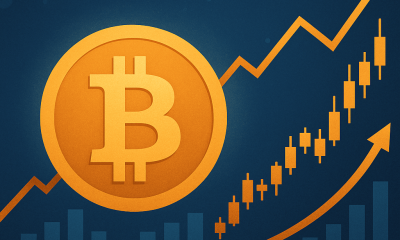
 Blockchain1 week ago
Blockchain1 week agoThe Bitcoin Liquidity Supercycle Has Just Begun: Hedge Fund CEO – Crypto News
-

 Technology1 week ago
Technology1 week agoGoogle, Anthropic, OpenAI and xAI join US defence to tackle national security with AI – Crypto News
-
Business1 week ago
CME XRP Futures Hit $1.6B In Total Trading Volume Since Launch – Crypto News
-
others7 days ago
Bitcoin Critic Vanguard Becomes Strategy’s (MSTR) Largest Shareholder – Crypto News
-
![Stellar [XLM] bulls exhausted after rally - Is a pullback nearby?](https://dripp.zone/news/wp-content/uploads/2025/07/Stellar-XLM-bulls-exhausted-after-rally-Is-a-pullback.webp-400x240.webp)
![Stellar [XLM] bulls exhausted after rally - Is a pullback nearby?](https://dripp.zone/news/wp-content/uploads/2025/07/Stellar-XLM-bulls-exhausted-after-rally-Is-a-pullback.webp-80x80.webp) Cryptocurrency7 days ago
Cryptocurrency7 days agoStellar [XLM] bulls exhausted after rally – Is a pullback nearby? – Crypto News
-

 Technology7 days ago
Technology7 days agoV Guard INSIGHT-G BLDC fan review: Cool performer with a premium look – Crypto News
-
Cryptocurrency7 days ago
Fed’s Hammack Raises Inflation Concerns Amid Push For Interest Rate Cut – Crypto News



